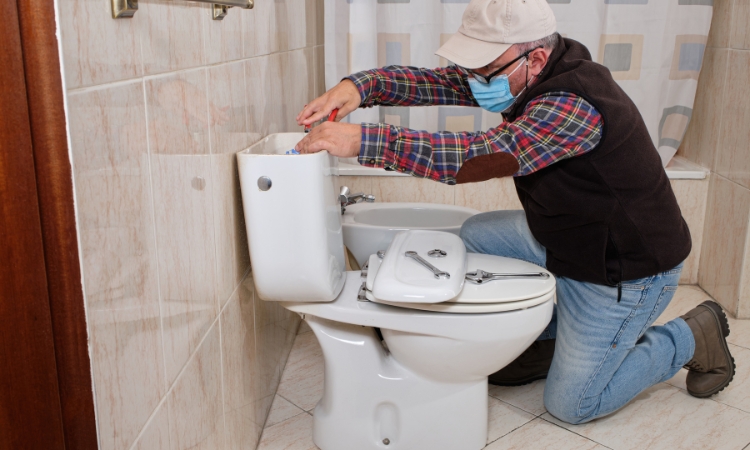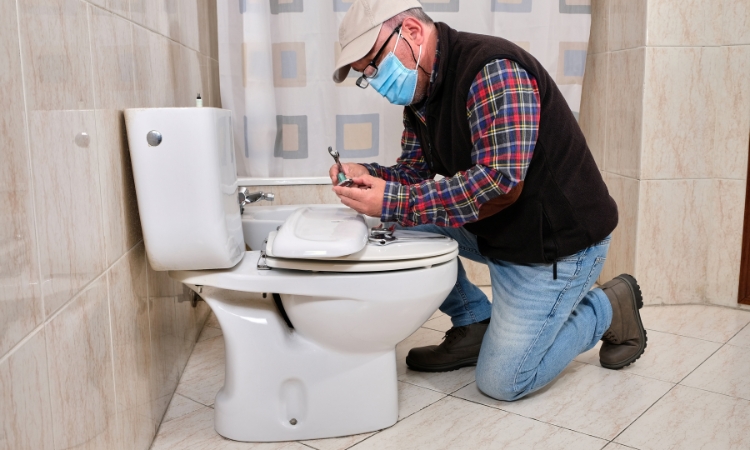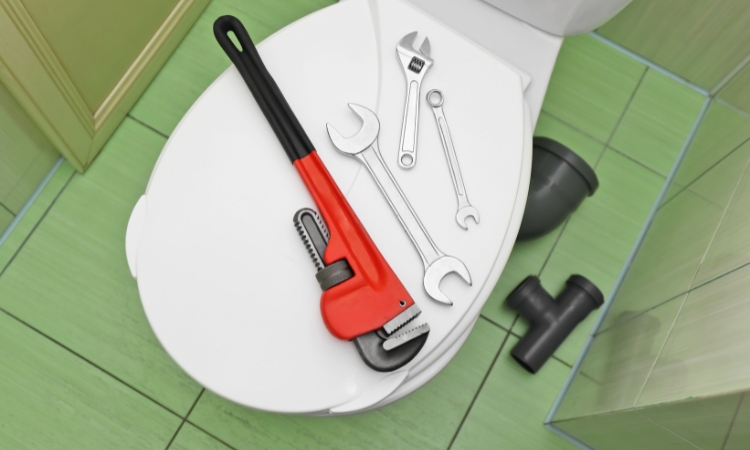A leaking toilet can aggravate, potentially resulting in water damage and increased water bills. Moreover, a leaking toilet will also cause you discomfort and a continuous headache. Therefore, it is essential to fix a leaking toilet promptly. The silver lining is that many toilet leaks are fixable with basic DIY skills and few tools.
It would help to have some basic guidelines to complete the process successfully. Therefore, this extensive guide will delve into the step-by-step process of identifying and fixing a leaking toilet, empowering you to save money and prevent further problems in your bathroom.
Steps to Repair a Leaking Toilet
The DIY steps to repair a leaking toilet or cistern should be carefully planned and thoughtfully executed. Otherwise, toilet leak repairs are complex to complete without professional assistance. Therefore, read the following steps to fix a leaky toilet and economically complete the repair process.
1. Identify the Source of the Leak
To begin, meticulous identification of the leak’s source is critical. Common areas include the toilet base, tank, and supply line. Inspect any water pooling around the toilet, wet spots on the floor, or any signs of water damage. Once you accurately locate the source, you can fix a toilet leak repair.
2. Fix a Leaky Toilet Base
A leak around the base often indicates issues with the wax ring or the toilet flange. Start by turning off the water supply and flushing the toilet to empty the tank. Removing the toilet reveals the wax ring, which should be replaced if damaged or worn.
Ensure the toilet flange is securely connected to the floor before reinstalling the toilet. Secure the bolts evenly to create a watertight seal.
3. Repairing a Leaking Tank
A leaking tank is typical because of a faulty flush valve, fill valve or a deteriorated gasket. Turn off the water supply, flush the toilet, and empty the tank. Inspect the flush valve and replace it if there are signs of wear or corrosion.
Check the fill valve for leaks and change it if necessary. Furthermore, examine the tank-to-bowl gasket and bolts and tighten or replace them if needed.

4. Addressing a Leaking Supply Line
If water comes from the supply line connection, a loose or damaged coupling might be the issue. Turn off the water supply, disconnect the supply line from the toilet and water source, and inspect the coupling.
Replace it if worn, ensuring a tight fit when reconnecting the supply line. Use the plumber’s tape to create a perfect seal.
5. Upgrading Old or Faulty Components
Consider replacing old or faulty components to prevent future leaks. Premium quality fill valves, flush valves, and supply lines provide increased reliability and longevity.
Using modern, water-efficient toilet parts reduces the risk of leaks and contributes to water conservation over time.
6. Regular Maintenance Tips
Preventive maintenance is essential for avoiding future toilet leaks. Regularly check for indications of water around the toilet, inspect tank components, and tighten any loose connections. Monitor water bills, as unexpected increases may indicate a hidden leak.
Early detection through routine maintenance can save you from costly repairs and potential water damage. Moreover, maintenance sessions also allow you to update your plumbing system and include minor changes per your house’s requirements.
7. Exploring Advanced Troubleshooting
For persistent or complex leaks, advanced troubleshooting may be necessary. The advanced troubleshooting includes:
- Inspecting the tank interior for cracks.
- Ensuring proper flush valve and flapper alignment.
- Checking the float and float arm in the tank for proper functioning.
If you need more clarification about these advanced steps, Plumber Singapore is a trustworthy platform for professional consultation and plumbing services.

8. Environmental Impact of Leak Prevention
If you fix a leaking toilet promptly, you contribute to water conservation and preservation of your home. Emphasize that preventing leaks preserves your home and contributes to water conservation because the leaks can affect your home’s structure and cause a lot of water wastage.
Therefore, if you have a leaking toilet, fix it immediately to preserve the resources. As a precious resource, water conservation aligns with sustainable practices, benefiting the environment on a larger scale.
9. Importance of DIY Repairs
The significance of DIY repairs lies in saving money and having a sense of self-reliance. For example, if you fix a leaking toilet or cistern, you will have a sense of satisfaction and peace of mind.
You can also share success stories of individuals who successfully fixed toilet leaks independently, underscoring the accessibility of these repairs for the average homeowner. Highlight the empowerment that comes with getting basic plumbing skills.
10. Common Challenges and How to Overcome Them
Acknowledge that dealing with a leaking toilet can pose challenges, especially for those new to the DIY approach. Resolve common issues, such as fear of causing further damage or uncertainty about identifying specific parts.
Get additional tips from Plumbing Services Singapore. To support individuals facing difficulties, provide more tips and resources, such as online tutorials and community forums.
Conclusion
In conclusion, you do not always need a plumber to fix a leaking toilet. With essential tools, knowledge, and the steps enlisted in this detailed DIY article, you can confidently resolve common toilet leaks, saving money and potential headaches.
Regular maintenance and prompt attention to leaks preserve your bathroom’s integrity and contribute to water conservation. Remember, a leak-free toilet isn’t just beneficial for your home; it contributes positively to environmental sustainability.
